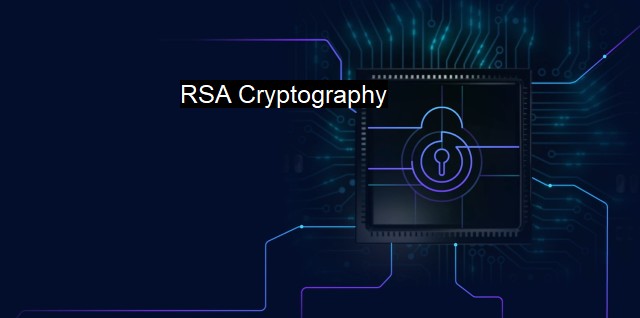What is RSA Cryptography?
Secure Communications with RSA Cryptography: a Comprehensive Guide to Encryption and Online Privacy
RSA Cryptography is a powerful security algorithm used in digital systems to ensure confidentiality, authenticity, and data integrity. It is a well-known encryption and decryption method in the sphere of cybersecurity and antivirus programs. It's an acronym for Rivest, Shamir, and Adleman, the three inventors of this public-key cryptosystem.In the world of cyber threats and vulnerabilities, RSA Cryptography plays an effective role in securing sensitive data. when our confidential data is sent across networks, it is potentially exposed to myriad dangers, including data breaches and unauthorized interceptions. In this context, RSA cryptography acts like a robust shield to save an individual's or an organization's critical information from falling into the wrong hands.
RSA encryption works by using foundational arithmetic principles teamed with the complexity of large prime numbers. It possesses the elegance of mathematical simplicity and brute strength that ensures data protection and security. At the core of its function lies a pair of keys - one public, for encryption, and the other private, for decryption. The idea is that the data encrypted with a public key can only be decrypted with its corresponding private key. This ensures the security of communication.
The mechanism of RSA Cryptography begins when a sender uses a receiver's public key to encrypt the data. After encryption is complete, the sensitive data gets converted into unreadable, ciphered text. Consequently, the encoded information is transmitted over the network to the receiver. After receiving the coded data, the receiver uses their private key to decode this text into a readable and original format. The private key is supposed to be kept secret and not to fall into unauthorized hands.
In the context of antivirus systems, RSA Cryptography can be used to ensure secure communication between the user's system and the server of the antivirus software. Sometimes, the antivirus system may need to send sensitive data such as system scans, personal details or credit card information. This sensitive data can be potentially hijacked by malicious entities. RSA can protect here by providing strong and secure encryption.
RSA can be leveraged to deal with a variety of cybersecurity issues. For instance, in today's digital era where we are constantly creating, receiving and saving digital documents such as Bank details, identities, passwords, and emails, service providers use RSA cryptography to protect these credentials.
The strength of RSA Cryptography comes from the difficulty of factoring large prime numbers, which constitutes a mathematical problem that even the most powerful computers would find time consuming. Even though innovations like Quantum Computing pose a threat to RSA cryptography as quantum computers have the potential to solve complex problems much quicker, presently RSA Algorithm remains a common and widely popular method, constantly updated and revised by the cybersecurity community to counter expanding cyber threats.
RSA Cryptography isn't exempted from cons. One of the disadvantages it brings is that it's slower when compared to other key distribution and agreement methods. So, for efficiency, RSA is generally combined with faster symmetric algorithms in actual usage.
RSA Cryptography is a cornerstone in the field of cybersecurity with far-reaching influence and use cases. Despite having its challenges and potential threats, the RSA encryption system, with its constantly improving methodologies, affirms to be standing the test of time and technology. It offers itself as an excellent wall of defense in protecting sensitive data, combating cyber threats, and providing a robust road to cybersecurity and securing antivirus systems.

RSA Cryptography FAQs
What is RSA cryptography?
RSA cryptography is a widely used encryption algorithm in the field of cybersecurity. It is used to secure communication, data storage, and digital signatures. RSA stands for Rivest-Shamir-Adleman, which are the names of the inventors of this algorithm.How does RSA cryptography work?
RSA cryptography uses a public key and a private key to encrypt and decrypt messages. The public key is used to encrypt the message, and the private key is used to decrypt it. The keys are generated using large prime numbers and mathematical operations.Is RSA cryptography secure?
RSA cryptography is considered a secure encryption algorithm if it is implemented correctly. However, if the keys are not generated properly, or if the key length is too short, it can be vulnerable to attacks. Therefore, it is important to use a strong key length and protect the private key from unauthorized access.How is RSA cryptography used in antivirus software?
RSA cryptography is used in antivirus software to verify the authenticity and integrity of software updates. The software vendor signs the update with their private key and distributes the signature with the update. The antivirus software uses the vendor's public key to verify the signature and ensure that the update is genuine and has not been tampered with. This helps to prevent malware from being distributed under the guise of a legitimate software update.| | A | | | B | | | C | | | D | | | E | | | F | | | G | | | H | | | I | | | J | | | K | | | L | | | M | |
| | N | | | O | | | P | | | Q | | | R | | | S | | | T | | | U | | | V | | | W | | | X | | | Y | | | Z | |
| | 1 | | | 2 | | | 3 | | | 4 | | | 7 | | | 8 | | |||||||